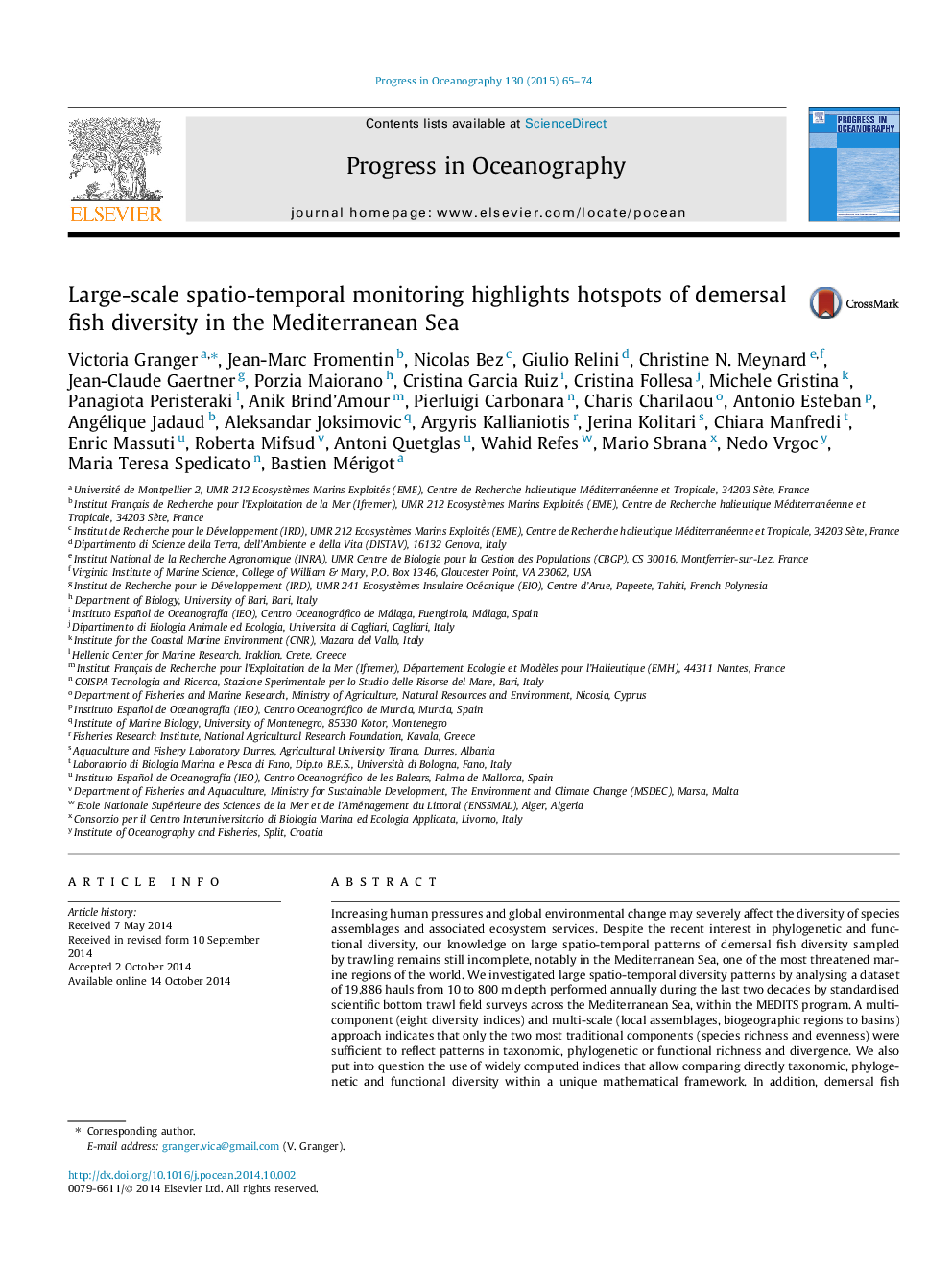| کد مقاله | کد نشریه | سال انتشار | مقاله انگلیسی | نسخه تمام متن |
|---|---|---|---|---|
| 6388521 | 1627926 | 2015 | 10 صفحه PDF | دانلود رایگان |
• We analyse fish diversity by a multiple indices and scales approach over 19 years.
• Species richness and evenness are proxies of phylogenetic and functional components.
• Species richness reveals hotspots for different spatial scales contrary to evenness.
• All diversity components remains stable over the last two decades.
Increasing human pressures and global environmental change may severely affect the diversity of species assemblages and associated ecosystem services. Despite the recent interest in phylogenetic and functional diversity, our knowledge on large spatio-temporal patterns of demersal fish diversity sampled by trawling remains still incomplete, notably in the Mediterranean Sea, one of the most threatened marine regions of the world. We investigated large spatio-temporal diversity patterns by analysing a dataset of 19,886 hauls from 10 to 800 m depth performed annually during the last two decades by standardised scientific bottom trawl field surveys across the Mediterranean Sea, within the MEDITS program. A multi-component (eight diversity indices) and multi-scale (local assemblages, biogeographic regions to basins) approach indicates that only the two most traditional components (species richness and evenness) were sufficient to reflect patterns in taxonomic, phylogenetic or functional richness and divergence. We also put into question the use of widely computed indices that allow comparing directly taxonomic, phylogenetic and functional diversity within a unique mathematical framework. In addition, demersal fish assemblages sampled by trawl do not follow a continuous decreasing longitudinal/latitudinal diversity gradients (spatial effects explained up to 70.6% of deviance in regression tree and generalised linear models), for any of the indices and spatial scales analysed. Indeed, at both local and regional scales species richness was relatively high in the Iberian region, Malta, the Eastern Ionian and Aegean seas, meanwhile the Adriatic Sea and Cyprus showed a relatively low level. In contrast, evenness as well as taxonomic, phylogenetic and functional divergences did not show regional hotspots. All studied diversity components remained stable over the last two decades. Overall, our results highlight the need to use complementary diversity indices through different spatial scales when developing conservation strategies and defining delimitations for protected areas.
Journal: Progress in Oceanography - Volume 130, January 2015, Pages 65–74
